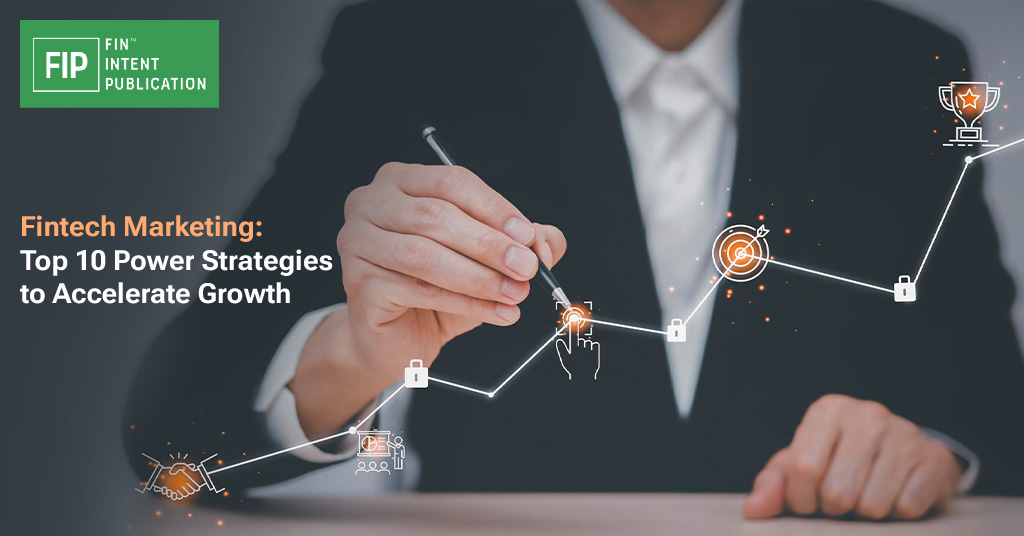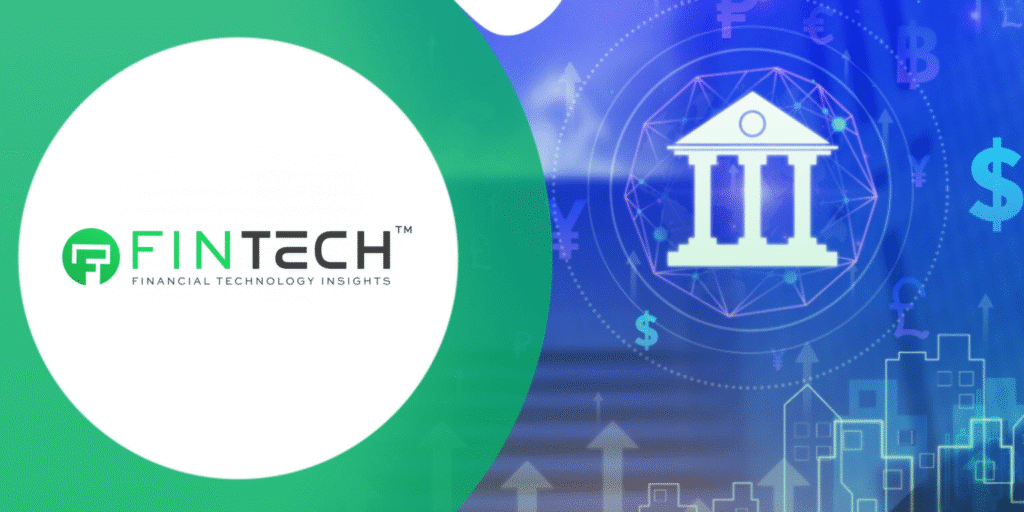Hello, my Fintech zealots..FinIntentPub is back with another powerful blog on Fintech Marketing: Top 10 Power Strategies to Accelerate Growth.
To stand out from the competition, let your audience experience your brand. For this reason, we need to read Fintech in Marketing!
Read Latest on Banking: Neobanking 101: What It Is and Why It Matters
What is Fintech in Marketing?
Innovative financial services are offered by fintech companies through technology. Promoting these services through different marketing channels is what fintech marketing is all about. Successful fintech marketing requires an in-depth familiarity with the domain’s peculiarities to develop targeted campaigns.
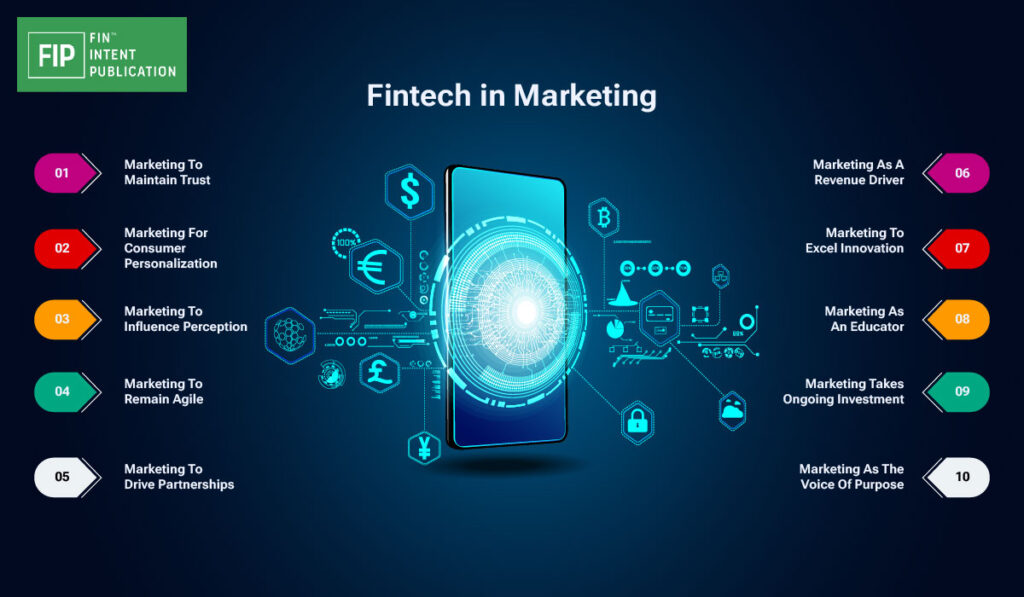
Top 12 Fintech Marketing Agencies
We’ve pulled together some of the best fintech marketing agencies so you can make the right choice for your brand.
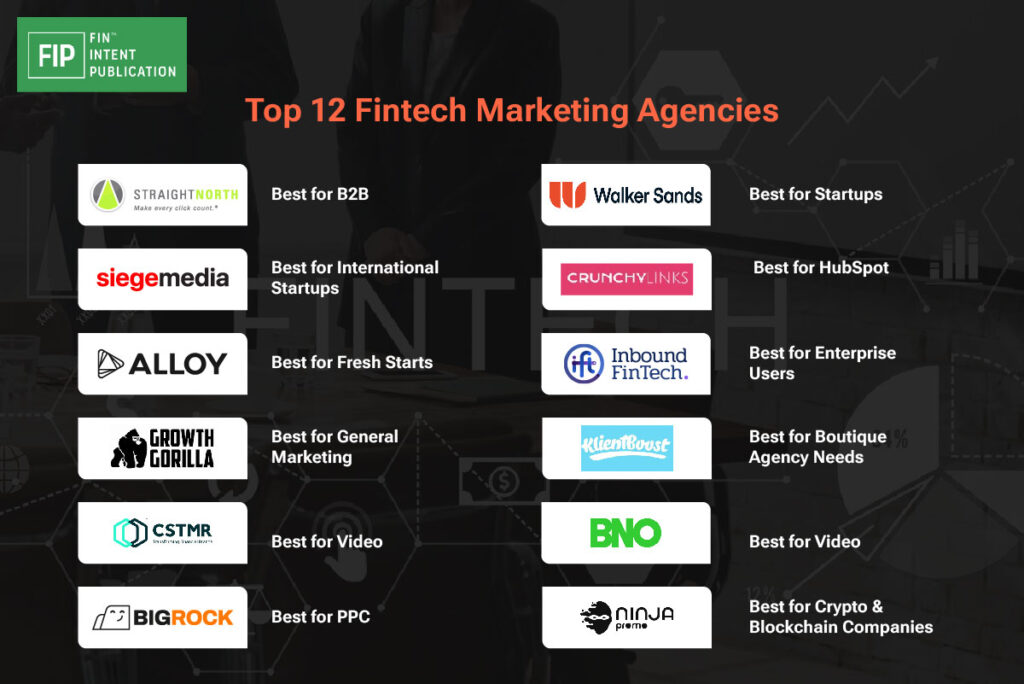
Top 10 Fintech Marketing Strategies
. Content Marketing
. Cross-Sell to Existing Customers
. Social Media Marketing
. Partnership Marketing
. Referral Marketing
. Understand Customer Painpoints
. Brand Strategy
. Community Marketing
. Experimental Marketing
. Gamification
Read: Intent Latest Whitepaper on 2024 Data Engineering Trends & Predictions
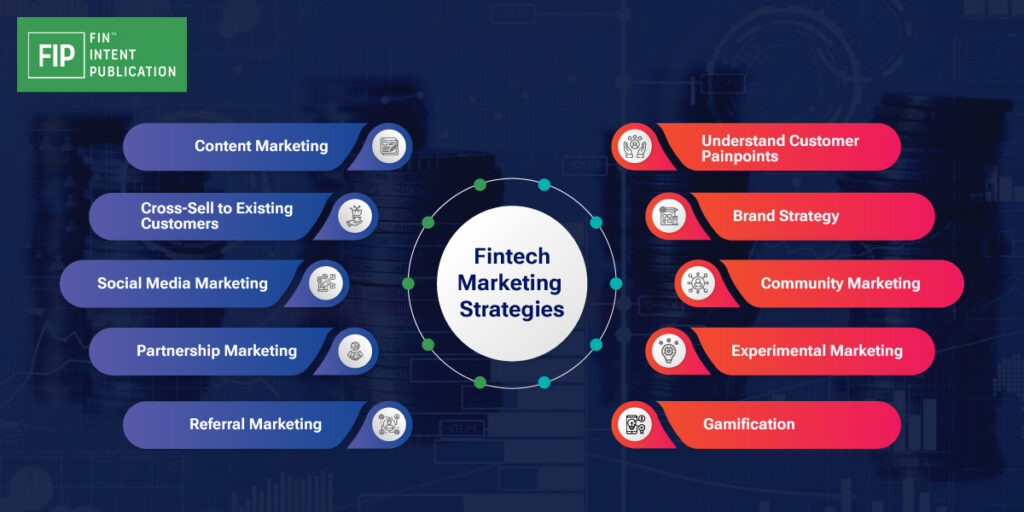
1. Content Marketing
A good content marketing strategy should include the 5C’s: calibrate, create, curate, circulate, and convert, to stand out from the sea of material online. Consistent publishing isn’t enough.
Your brand can benefit greatly from a well-executed Fintech content marketing plan. Creating content has several uses beyond just increasing a business’s visibility online. Content, on the other hand, establishes your company as a pioneer and authority in your field. Consequently, you can increase customer trust and confidence.
It is used by many prominent organizations in the world, including:
To help you create more valuable content, here are some strategies:
- To boost your brand’s credibility, develop content that will last a lifetime. If people who are looking for financial guidance begin to browse your blog postings, you could become popular.
- Make sure your site works well on mobile devices. Please pay close attention to meeting the needs of those who spend much time every day using their mobile devices.
- Consider Acorns, a Fintech business that makes investing easy for its consumers, as an example. Users may make educated investment decisions with the help of their user-friendly instructional information and resources. In addition to establishing Acorns’ reliability and trustworthiness, this helps their clients better manage their funds.
2. Cross-Sell to Existing Customers
Nonetheless, consumers’ use of Fintech apps has plenty of space to grow. Selling to an existing customer often yields a 60-70% success rate. Selling to a new consumer, however, only has a success rate of 5-20%. This means that your current clientele offers your best sales potential.
To enhance cross-selling, consider a few things:
- Notify and email users about new features in the app
- Use promotions for similar products to upsell or cross-sell
- Offer rewards to customers
- Bring attention to appealing app features in appealing offers.
- Targeted advertising campaigns
3. Partnership Marketing
When two companies work together for a common goal, they engage in partnership marketing. Collectively, they launch a well-planned campaign that benefits both of them. You might think of it as splitting the cost of marketing your Fintech products in half. During the pre-launch period, businesses often use paired Fintech marketing techniques and partnerships. By doing so, they may gauge consumer interest in their products and see if their ideas are feasible.
An exemplary case in point is the collaboration between the German neobank N26 and the British online money transfer provider Wise. Because of this change, N26 can now offer its users a simple and cheap way to transmit money from within the N26 app. This collaboration is mutually beneficial since it increases the quality of N26’s services and the number of people using Wise’s. Partnerships can be a great way to test the waters of a new industry or bring your product idea to fruition. Put simply, it has the potential to open the door to your next stage of development.
Examples of successful partnership marketing:
4. Understand Customer Painpoints
The problems that your current and future clients experience are known as customer pain points. These minor hiccups crop up whenever a consumer engages with your company. Neglecting to resolve these issues can damage their connection with your brand. Focusing on the needs of your target audience, your Fintech marketing strategy should cover topics such as:
- Expensive memberships
- Paying too much for membership
- Low-quality goods that wear out quickly
- Uncertain amount spent
- A spike in fees followed by a period of
- Gaining trust, satisfying customers, and expanding your business are all possible outcomes of listening to and responding to consumer concerns.
5. Referral Marketing
Motivating customers to promote a company’s goods in exchange for a reward is known as referral marketing. Participation would be advantageous for them since rewards could include freebies or discounts. They receive a bonus for each new customer they bring in as compensation for their assistance. Partnerships like these work wonders in the financial technology industry. They’re a quick and easy way to connect with your audience and earn their trust.
As a use case, take PayPal; they came up with an excellent referral strategy. A user might earn a bonus by PayPal for every friend they invited who signed up for an account. This bonus was thus shared when the new user made a few purchases. As the old saying goes, “Invite a friend, and you get the benefits” when you sign up for PayPal. The strategy was a huge success for PayPal. Its consumer base grew, and people also started to trust it more. To entice even more people, they boosted the cash bonus with additional funds from an investment round.
6. Brand Strategy
Picture your brand’s messaging as the conversational language your firm uses to engage with its target audience. It is like having a well-crafted conversation: concise, convincing, and memorable. People will identify with your business and be more likely to buy your product if you have strong branding. Think of interacting with a fintech product as having a conversation with a friend; the tone is usually quite personable and welcoming. By communicating straightforwardly, they establish credibility with the people they speak to. By adding a personal touch, we make digital-only solutions more approachable and establish an immediate rapport. But keep in mind that misunderstandings can quickly destroy trust. A lot more technology-based solutions explain sophisticated financial concepts using common language and jargon.
7. Community Marketing
Undoubtedly, community marketing is changing the face of the industry. This method enables companies to interact with their intended consumers on a more personal level. This strategy accelerates expansion by catering to client’s tastes and requirements in a way that hits home. Both Monzo and Revolut have built robust brand communities that have been important in driving innovation and expansion. Inviting customers to live Q&As and community meet-ups and soliciting product feedback are all part of this.
8. Experimental Marketing
- Its Spotify Everywhere brand activation invited users to an “immersive house of audio where music and podcasts are everywhere you turn.”
- IKEA Place is an augmented reality (AR) app that lets customers test how products fit into their homes.
Fun encounters are created for customers through experiential marketing. Traditional techniques, on the other hand, address them by name. One strategy to connect with customers is to provide them with an enjoyable and memorable experience. Customers are likely to be interested in learning more about the company and its offerings because of it. In addition, due to global events such as epidemics and changing work contexts, this strategy has undergone substantial evolution. Joining these activities from the comfort of one’s own home has made them more accessible and eliminated any potential distractions.
One company that has used innovative Fintech marketing tactics is WealthSimple. Following the “Content is King” approach, they have concentrated on producing interesting and useful material for their target demographic. Hence, this strategy has enabled them to attain significant success in a very competitive business.
9. Social Media Marketing
In what ways does your brand put influencer collaboration into action?
When advertising your brand on social media, influencer marketing is essential. Any company, no matter how big or little, may reach its target audience. Additionally, you form partnerships with prominent social media users or influencers. This leads to people promoting your items and endorsing them. Your marketing strategy for financial technology needs to be rethought if you aren’t utilizing Instagram or LinkedIn. Opportunities abound on these platforms, especially when influencers work together. You risk losing out on possibilities to acquire customers if you don’t have them.
10. Gamification
Applying game design components and gaming principles to non-game contexts is known as gamification. Now tell me how that relates to advertising. A few popular methods exist for this, but they all boil down to:
- Organize contests and award incentives.
- You may acquire reward points for various actions, such as referring friends or completing a purchase.
- Integrate visual components such as puzzles, quizzes, and games into otherwise bland information to make it more engaging and shareable.
- Gamification is often used in fintech pre-launch marketing to increase engagement, visibility, and user acquisition.
For instance, when their banking app was first released, Monzo—one of the most successful UK retail challenger banks—introduced a waiting list and a referral network. Users could only progress down the waiting list by referring friends to the product, which was added to their account when they downloaded the app. Customers’ competitive spirit, need for exclusivity, and natural curiosity are all piqued by waiting lists, which explains why they work so well.
The Future of Fintech Marketing
It is crucial to be able to personalize marketing messaging for different demographics, as we have seen. We at the fintech marketing agency know how important it is to create specific consumer personas, such as the collaborative buyer or the determined buyer. Marketing efforts can be fine-tuned to reach prospective consumers by delving into the particular wants and requirements of these personas.
Search Engine Optimization and Digital Presence: Financial technology firms face more competition than ever before in the digital marketplace. Consequently, having a robust online presence is crucial. Effective search engine optimization (SEO) plays a major role in this scenario. Beacon Digital Marketing can help financial companies reach their target audience more successfully by optimizing their content and website design for search engine visibility.
Ads & Paid Traffic: Paid traffic and advertising are still essential in fintech marketing, even though they’re expensive. The key to a healthy return on investment is striking the correct balance and making smart investments. Financial technology businesses may make better use of their advertising budgets by leveraging data.
Changes in consumer habits and new technologies propel the fintech business forward. Digital marketing tactics will undoubtedly remain dominant in the future of financial technology marketing. Email marketing’s focus on personalization and segmentation has grown, while search engine optimization’s role in generating organic traffic and exposure has not diminished.
This is not all!
FinIntentPub will come up soon with another informative blog in the fintech domain which will help you to stand out in the financial jungle!
Thanks for reading FinIntentPub!
We will be back with more exciting articles in the fintech domain!
Write to us for any suggestions.


